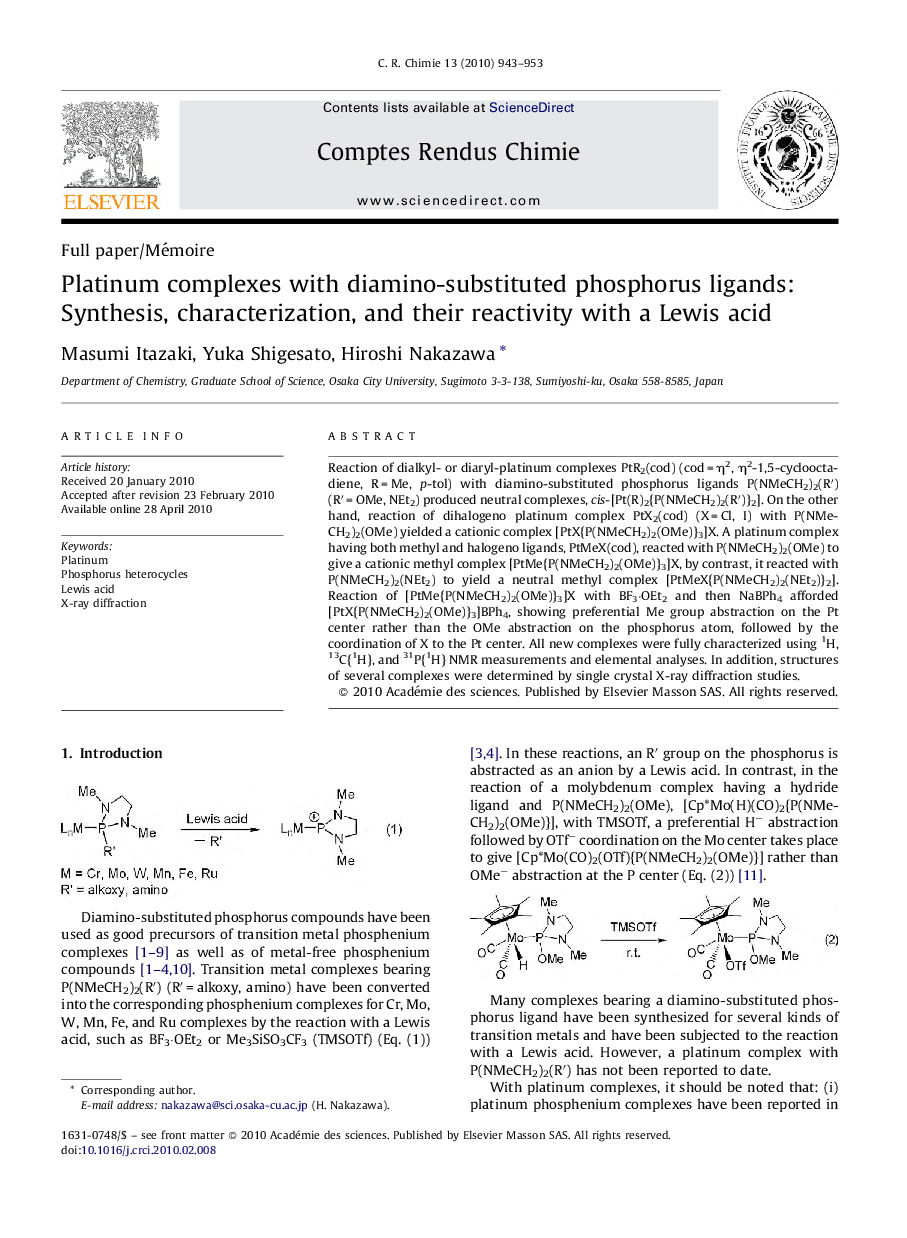| Article ID | Journal | Published Year | Pages | File Type |
|---|---|---|---|---|
| 6594590 | Comptes Rendus Chimie | 2010 | 11 Pages |
Abstract
Reaction of dialkyl- or diaryl-platinum complexes PtR2(cod) (cod = η2, η2-1,5-cyclooctadiene, R = Me, p-tol) with diamino-substituted phosphorus ligands P(NMeCH2)2(Râ²) (Râ²Â = OMe, NEt2) produced neutral complexes, cis-[Pt(R)2{P(NMeCH2)2(Râ²)}2]. On the other hand, reaction of dihalogeno platinum complex PtX2(cod) (X = Cl, I) with P(NMeCH2)2(OMe) yielded a cationic complex [PtX{P(NMeCH2)2(OMe)}3]X. A platinum complex having both methyl and halogeno ligands, PtMeX(cod), reacted with P(NMeCH2)2(OMe) to give a cationic methyl complex [PtMe{P(NMeCH2)2(OMe)}3]X, by contrast, it reacted with P(NMeCH2)2(NEt2) to yield a neutral methyl complex [PtMeX{P(NMeCH2)2(NEt2)}2]. Reaction of [PtMe{P(NMeCH2)2(OMe)}3]X with BF3·OEt2 and then NaBPh4 afforded [PtX{P(NMeCH2)2(OMe)}3]BPh4, showing preferential Me group abstraction on the Pt center rather than the OMe abstraction on the phosphorus atom, followed by the coordination of X to the Pt center. All new complexes were fully characterized using 1H, 13C{1H}, and 31P{1H} NMR measurements and elemental analyses. In addition, structures of several complexes were determined by single crystal X-ray diffraction studies.
Related Topics
Physical Sciences and Engineering
Chemical Engineering
Chemical Engineering (General)
Authors
Masumi Itazaki, Yuka Shigesato, Hiroshi Nakazawa,
